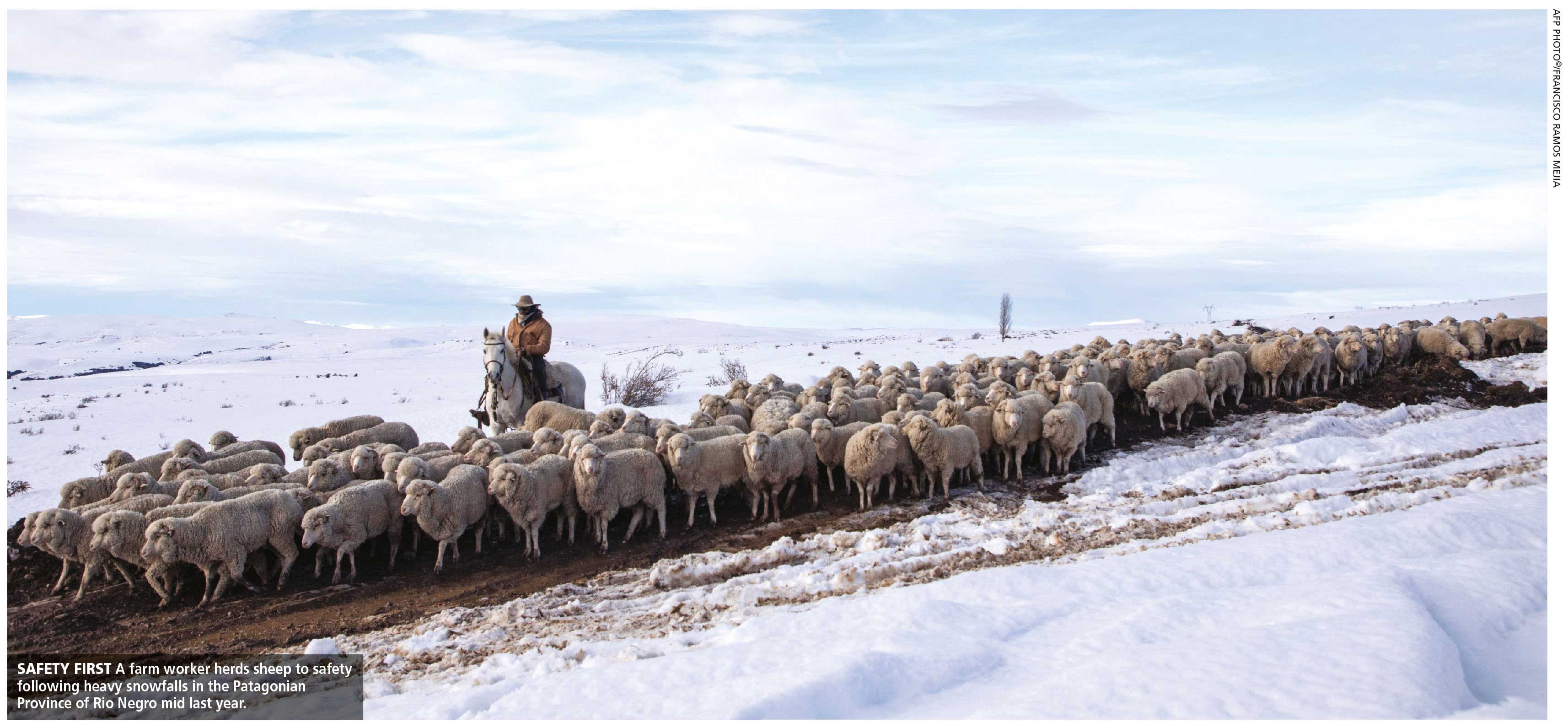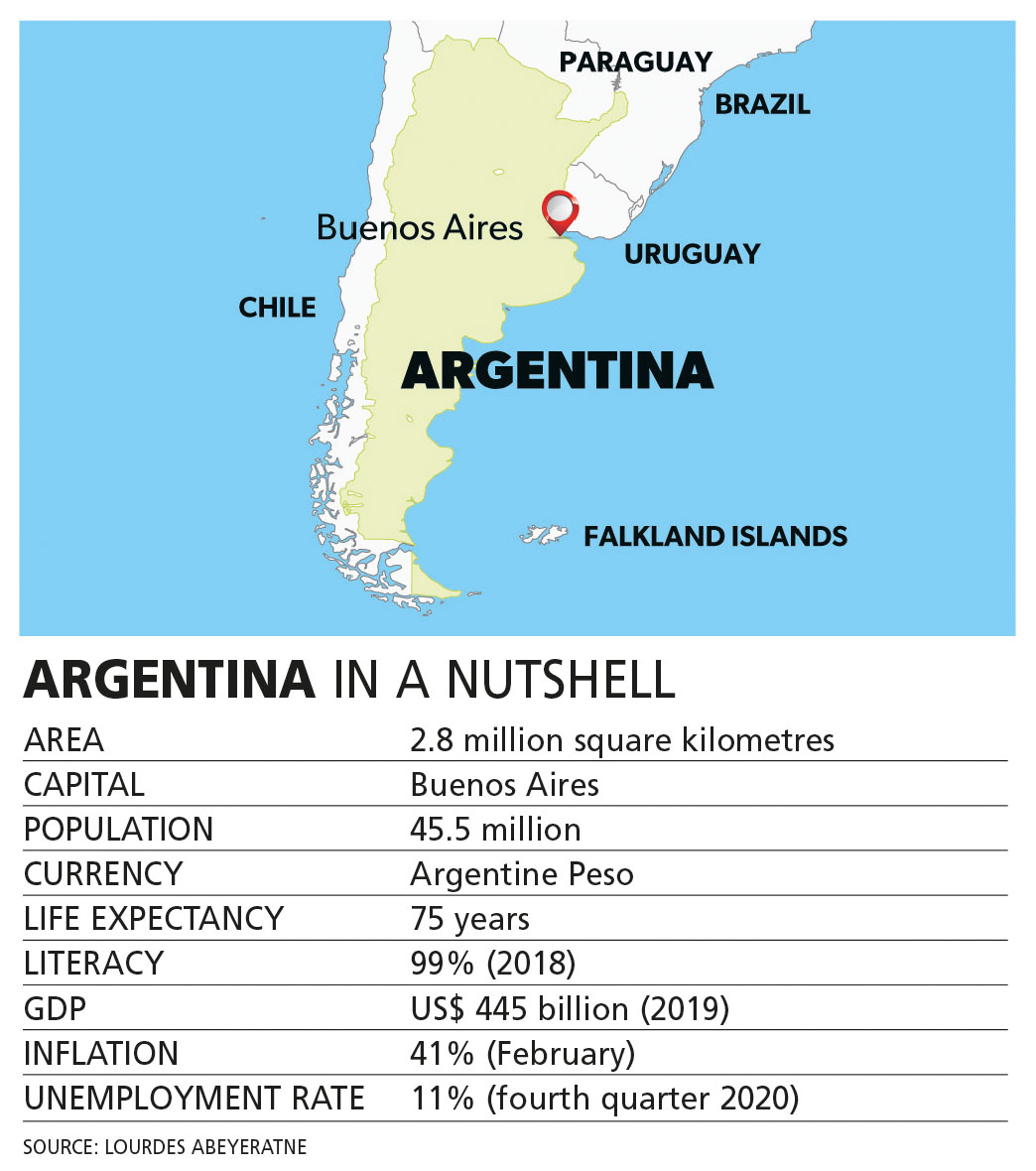ARGENTINA TODAY
THE ‘ARGENTINE PARADOX’
Lourdes Abeyeratne discusses Argentina’s history as an advanced economy and its subsequent decline
As the world’s eighth largest country, Argentina occupies a large chunk of South America; it has been known as an ‘immigration nation’ with an inflow of European migrants in the late 19th and early 20th centuries. In addition to boosting the population, this wave of immigration is also thought to have impacted the country’s political landscape, introducing movements such as labour unionism, anarchism and socialism.
 During the first three decades of the 20th century, Argentina was among the most prosperous countries in the world with wages that rivalled the UK, and total and per capita income surpassing Canada and Australia.
During the first three decades of the 20th century, Argentina was among the most prosperous countries in the world with wages that rivalled the UK, and total and per capita income surpassing Canada and Australia.
These days, Argentina lays claim to being one of the largest economies in Latin America with its gross national product (GNP) being among the highest in the region.
Moreover, it enjoys a strategic location, being positioned on the sea lanes between the south Atlantic and south Pacific Oceans, as well as boasting abundant natural resources in the form of energy and agriculture.
With a mostly temperate climate and vast expanses of fertile land, its main crops include soybeans, indigenous cattle and chicken meat, wheat, maize, cow milk, grapes, sunflower seeds, sugar cane and apples.
Aside from food processing and beverages, the country’s main economic sectors also include vehicle manufacturing, textiles, energy production and mining – and its services sector is a major contributor to the national economy too.
While it’s one of the least populated countries in Latin America in terms of population density, Argentina is among the most visited by international tourists in the region with tourism receipts amounting to US$ 5.7 billion in 2019, according to WTO data.
Despite this wealth of resources and history of advanced development, the country’s economy is also among the most studied for what is referred to by some as the ‘Argentine paradox.’ This stems from its history as a nation that experienced a reversal of its early development.
While enjoying solid economic growth before the 1930s, the economy deteriorated as a result of political instability.
Its development has been hampered by several economic downturns over the years – including periods of high inflation and unemployment, as well as a depression between 1998 and 2002. Furthermore, the country has changed its currency on five occasions.
More recently, Argentina was greatly impacted by the COVID-19 pandemic last year, following two years of recession and economic challenges.
In addition to a rate of inflation exceeding 50 percent atthe end of 2019, a series of demand side shocks also stifled the economy in 2020. The country also witnessed an economic contraction of 16.2 percent during the second quarter of the year – among the largest in its history.
As part of its efforts to mitigate the impacts of the crisis, the government led by President Alberto Fernández implemented emergency measures to protect the most vulnerable groups and help businesses, which is expected to widen the country’s fiscal deficit for the year to over 10 percent of GDP – the highest in more than three decades.
Fernández took office in December 2019. He capitalised on the country’s rising poverty and inflation to win the election over conservative incumbent Mauricio Macri. Since then, he has come under fire as economic challenges continue to mount while The Heritage Foundation also notes that economic freedom began declining under his rule following four years of improvement.
However, Argentina may experience a resurgence on the back of vaccination campaigns across the world, which has improved the outlook for the global economy.
 According to the World Bank’s Global Economic Prospects report published in January, Argentina is expected to grow by 4.9 percent this year as “a loosening of pandemic mitigation measures and fading uncertainty surrounding the recent debt restructuring are expected to support private consumption and investment.”
According to the World Bank’s Global Economic Prospects report published in January, Argentina is expected to grow by 4.9 percent this year as “a loosening of pandemic mitigation measures and fading uncertainty surrounding the recent debt restructuring are expected to support private consumption and investment.”
Furthermore, the IMF forecasts an expansion of 5.8 percent in 2021 in its recent World Economic Outlook. In April, IMF Chief Economist and Director of the Research Department Gita Gopinath stated that “the upgrade reflects to some extent the containment measures in the most recent round” while the virus had less of a negative effect on economic activity than previously anticipated.
The increase in global food prices is also proving to be beneficial, counting among Argentina’s main exports.
Argentina is also in talks with the funding agency to restructure the terms of the loan granted to the previous administration, as well as fund an economic programme that will help address the nation’s short and medium-term challenges.
The country is also preparing for midterm elections in October, which spells uncertainty for its economy. This will decide half the seats in the Chamber of Deputies and a third of the seats in the Senate, and could have major implications for Argentina’s economic policy as Fernández may have more political consensus to plot the way forward



